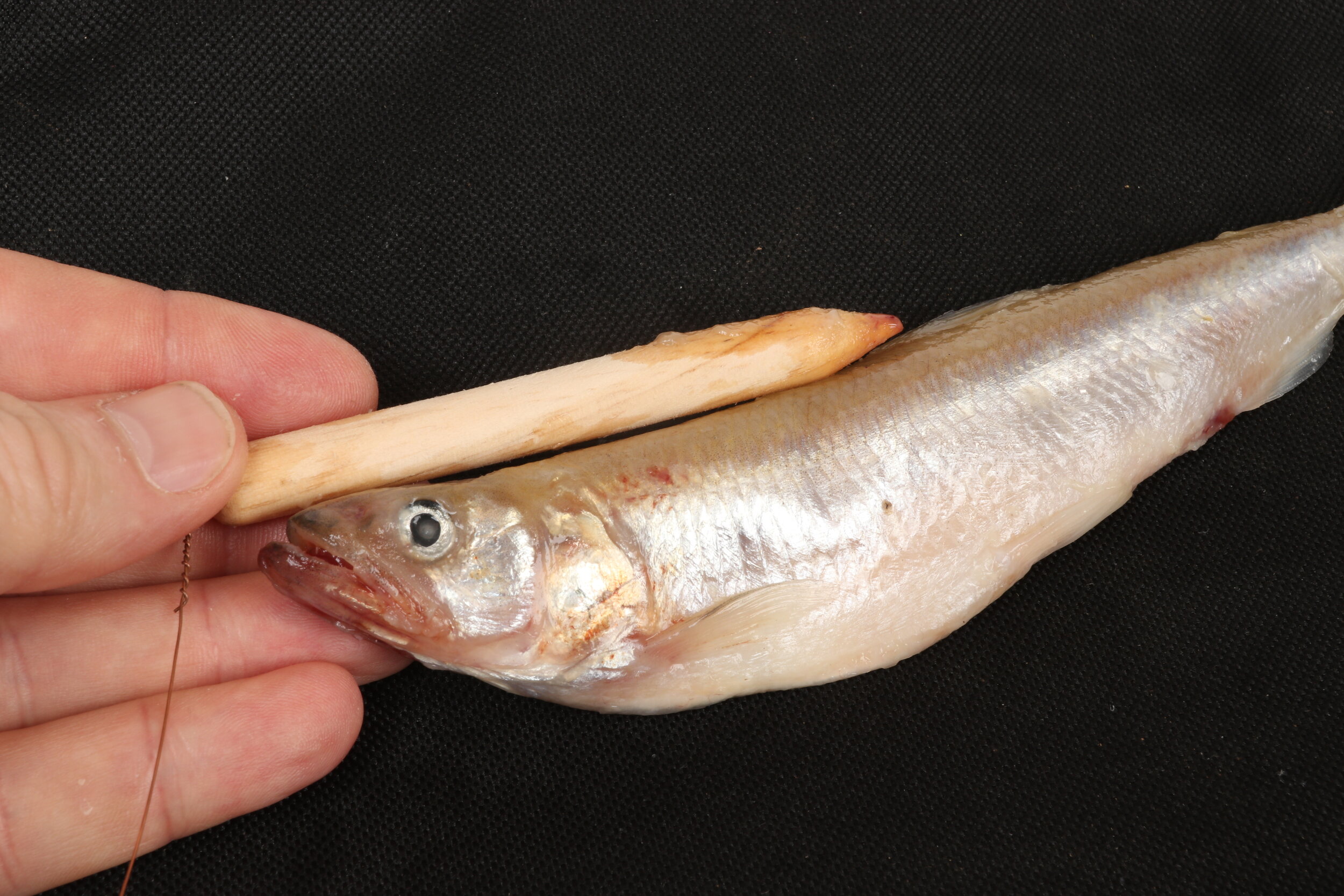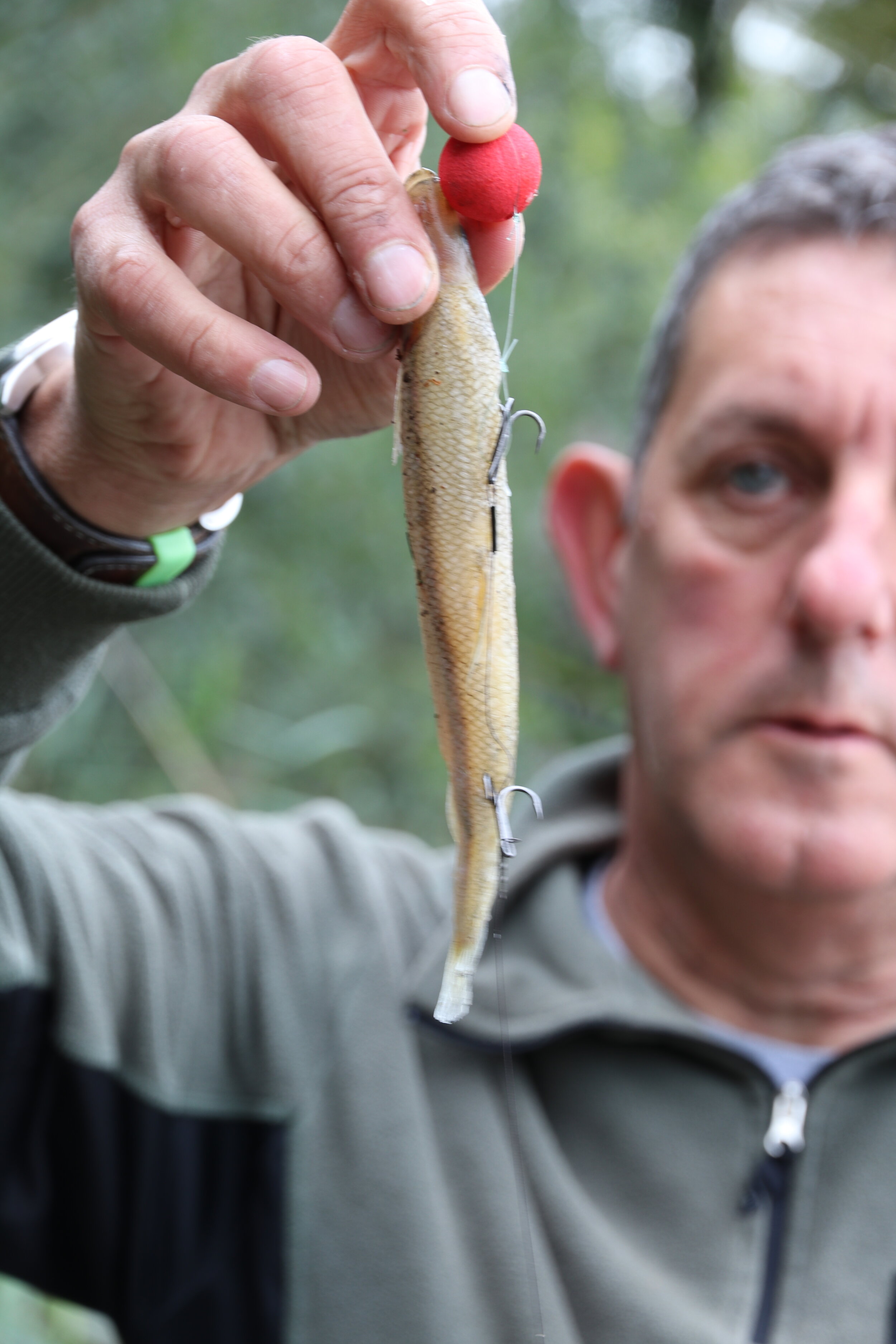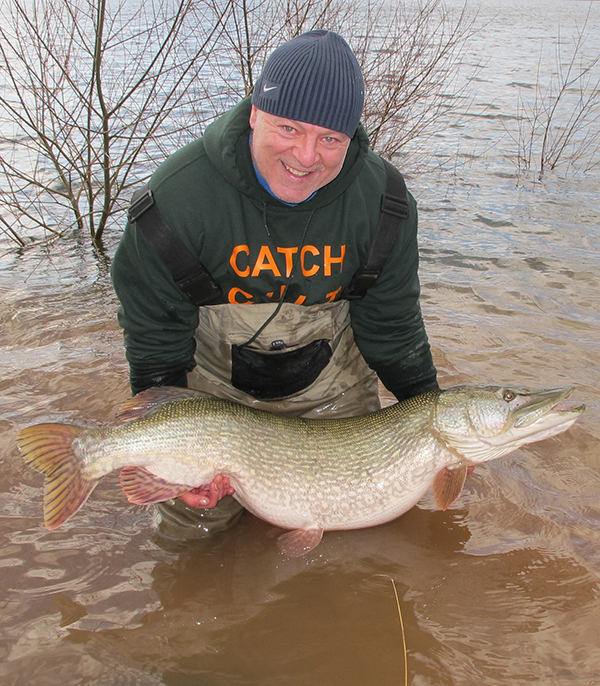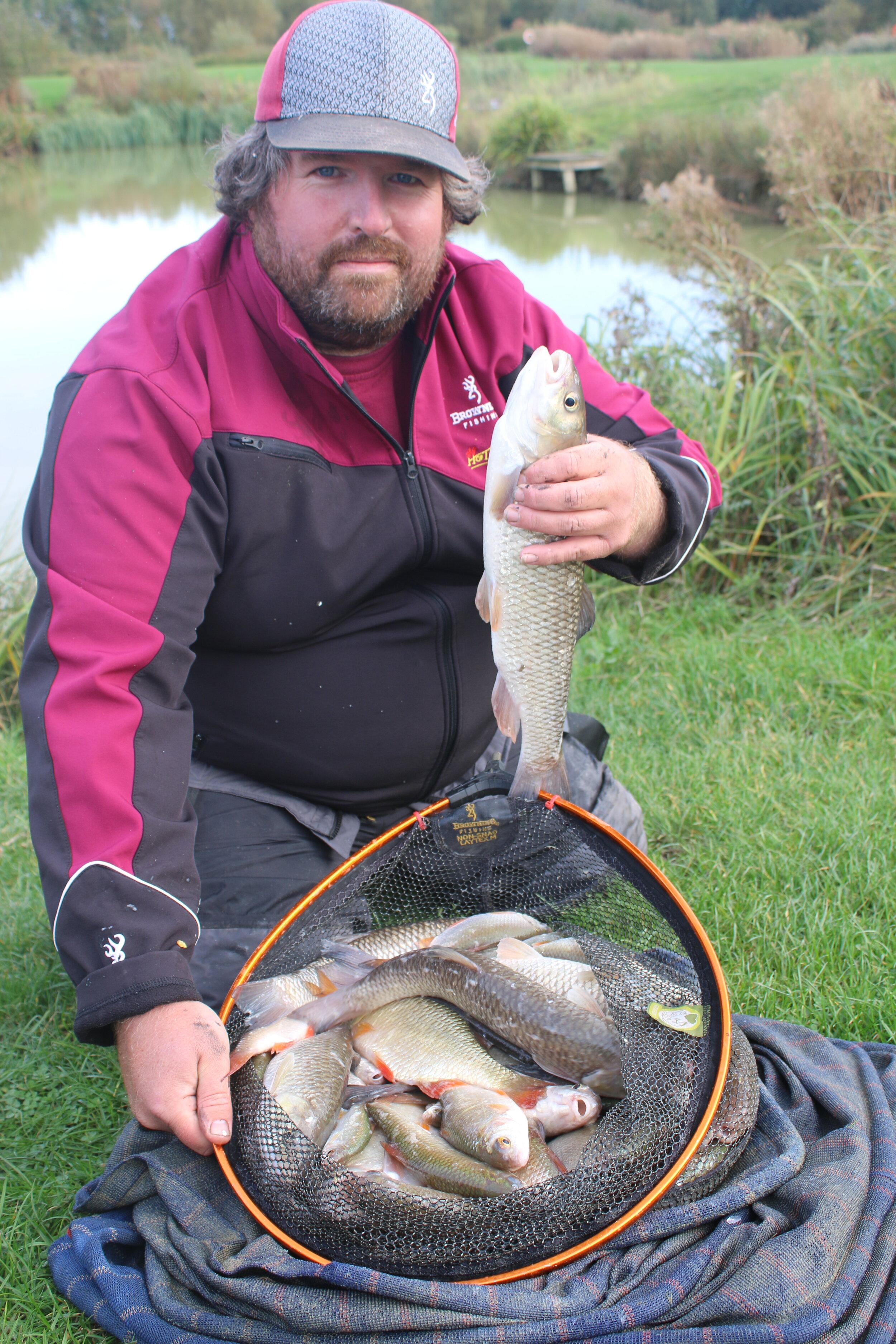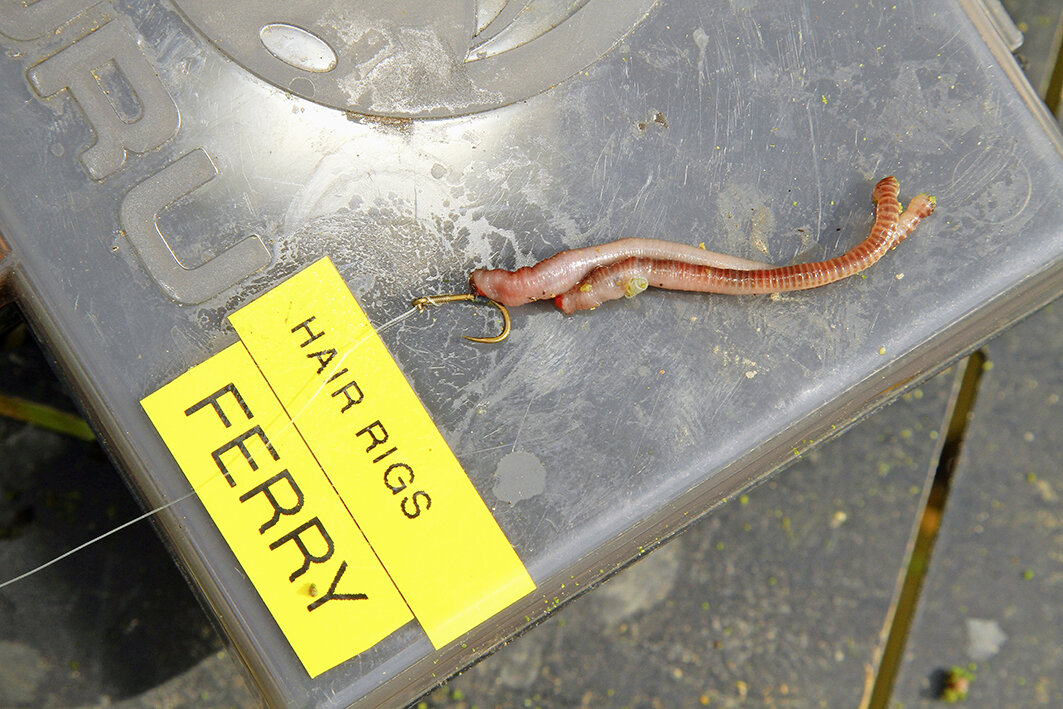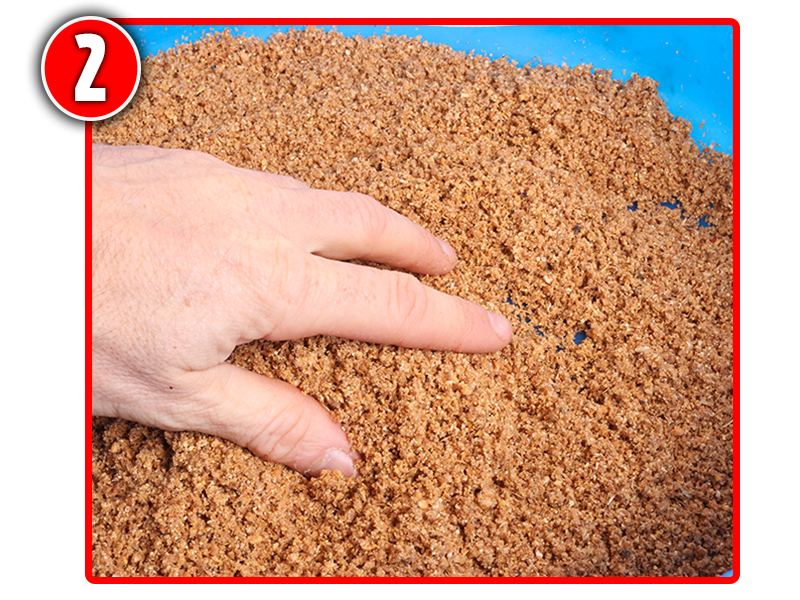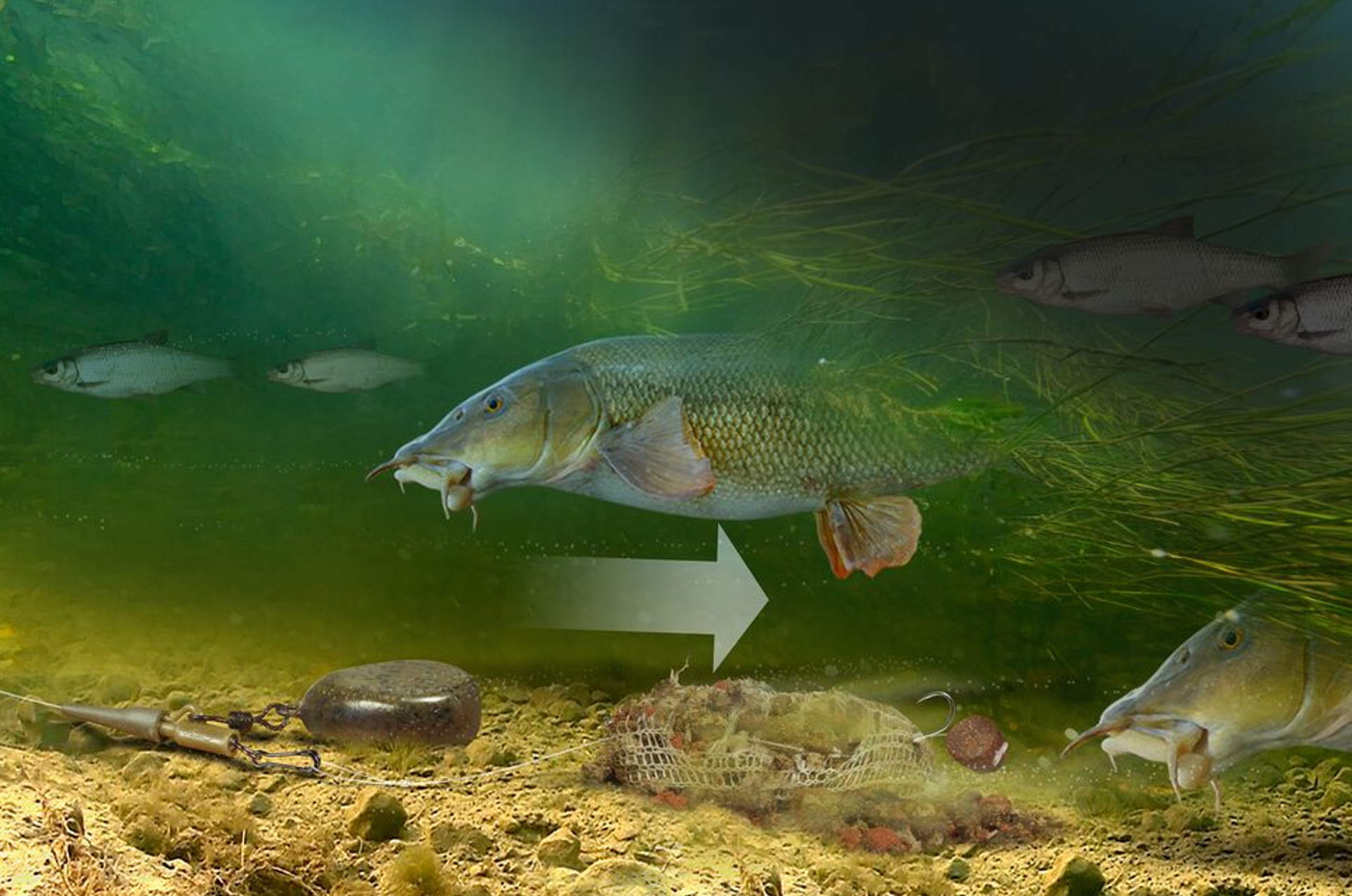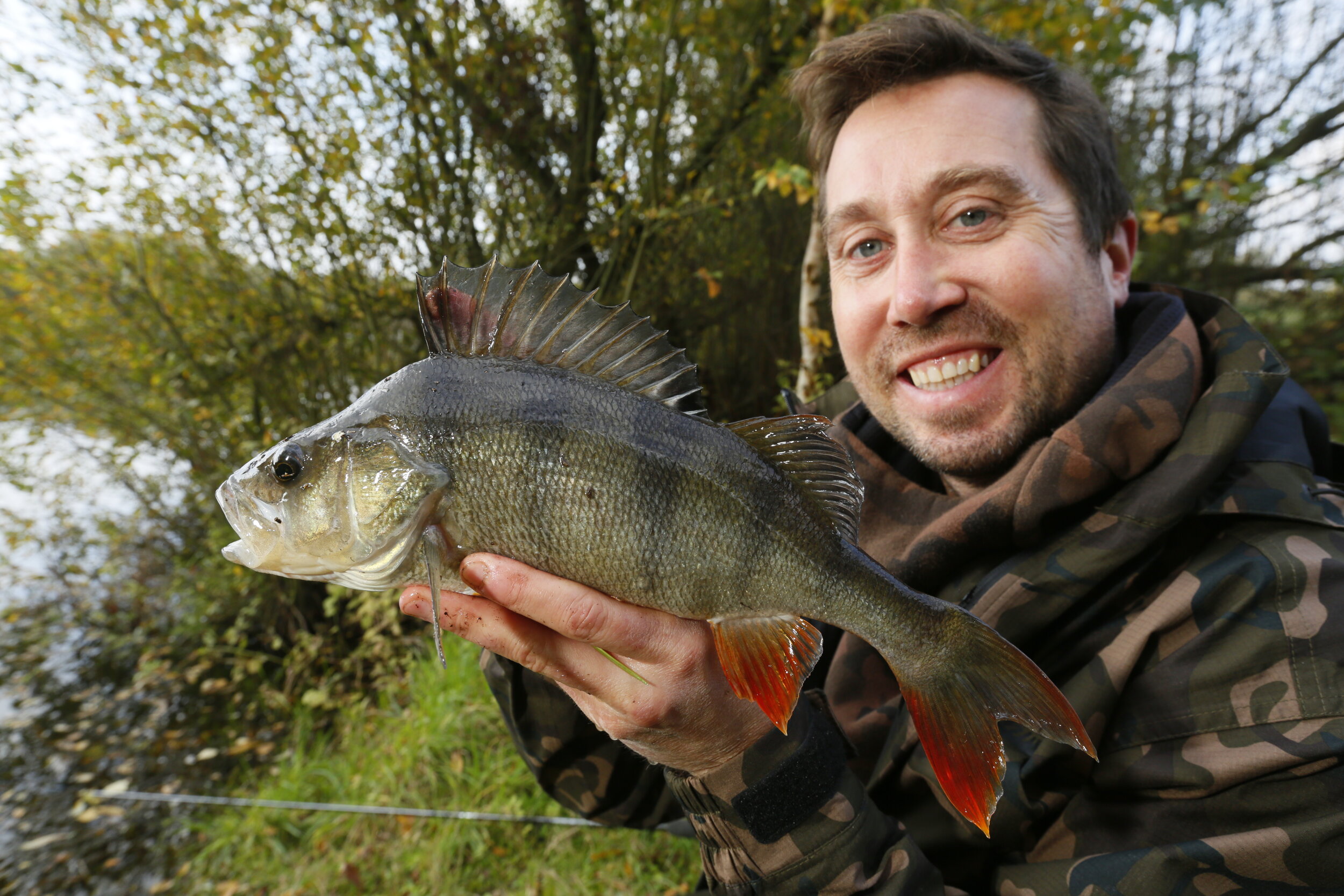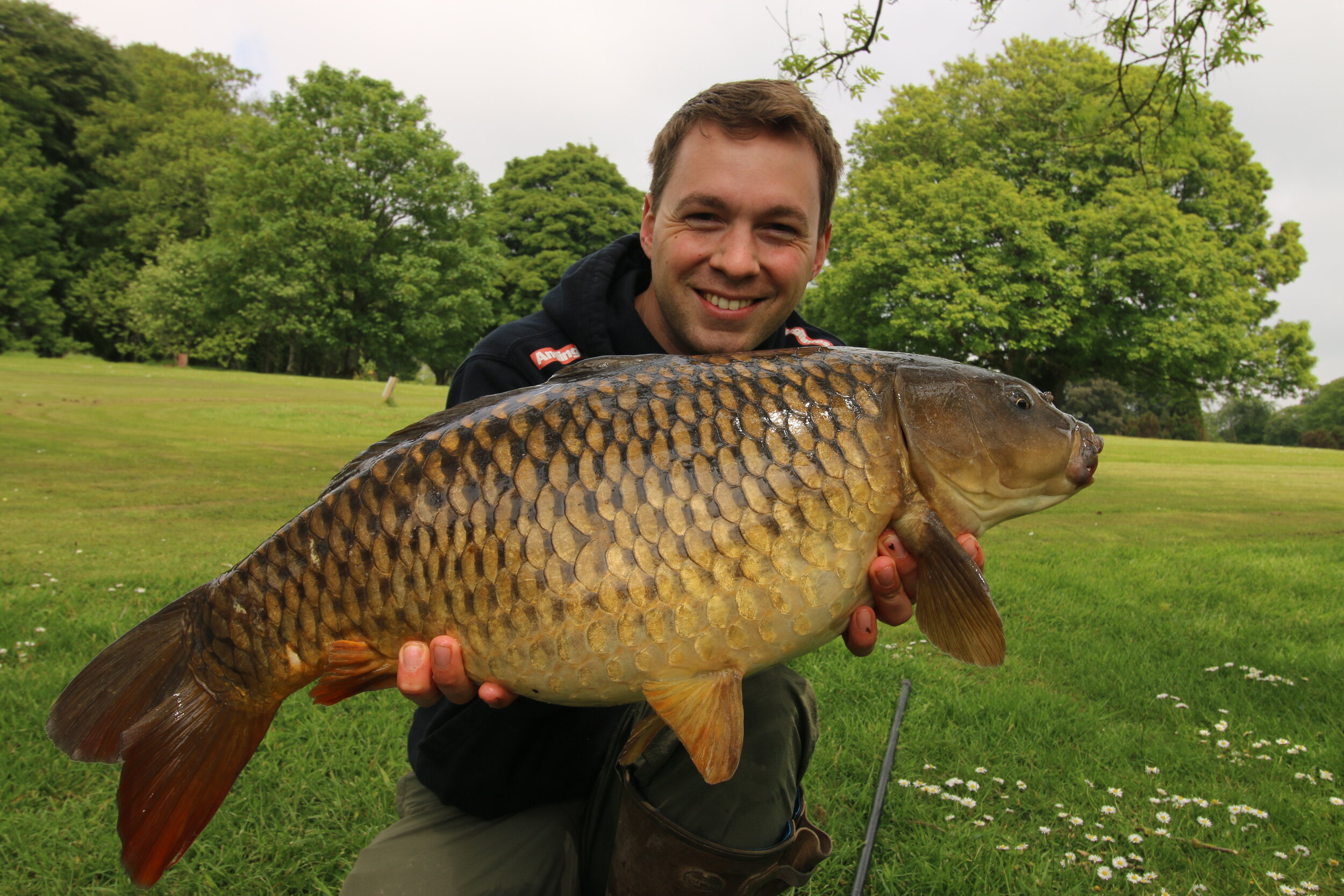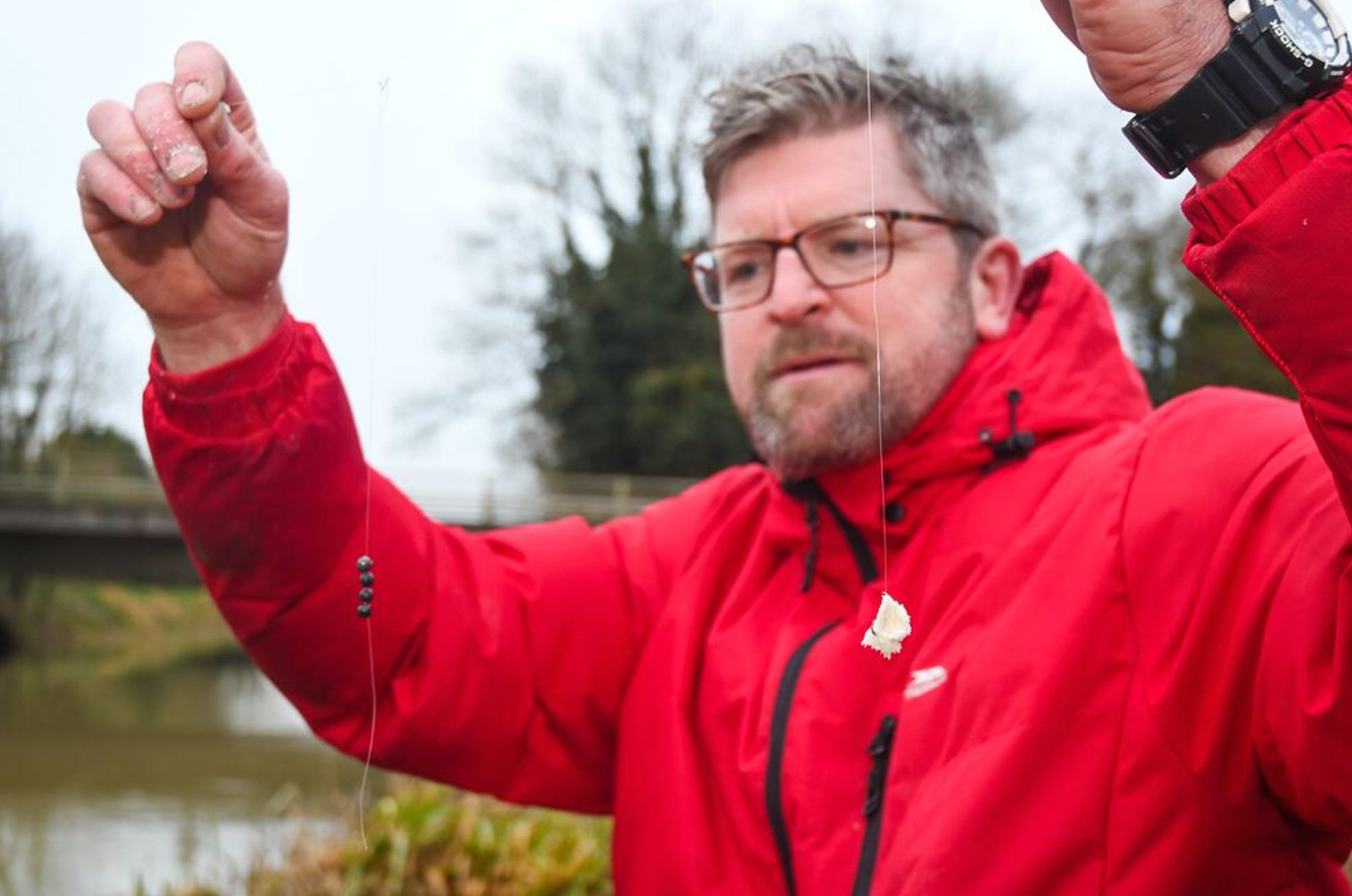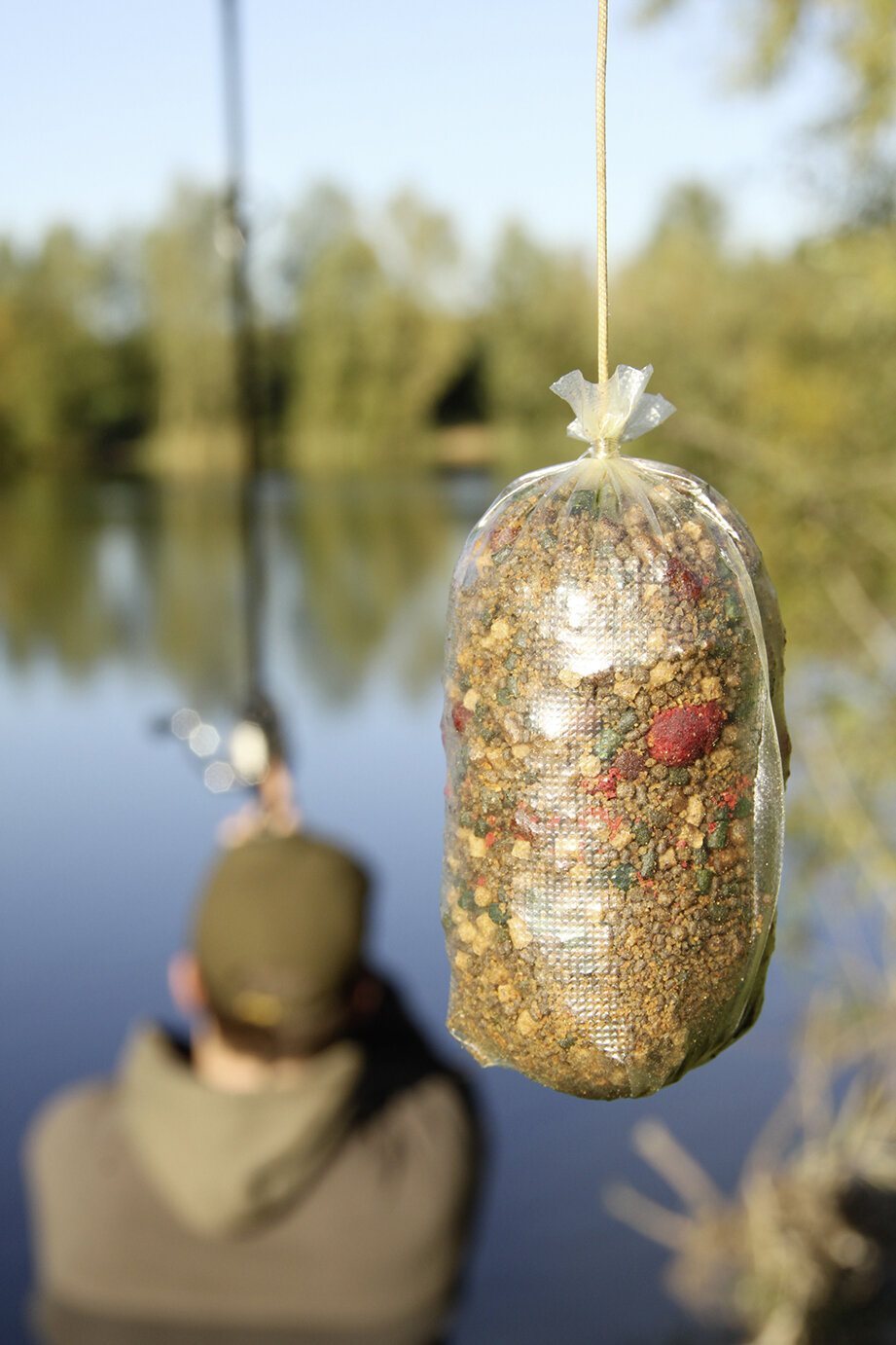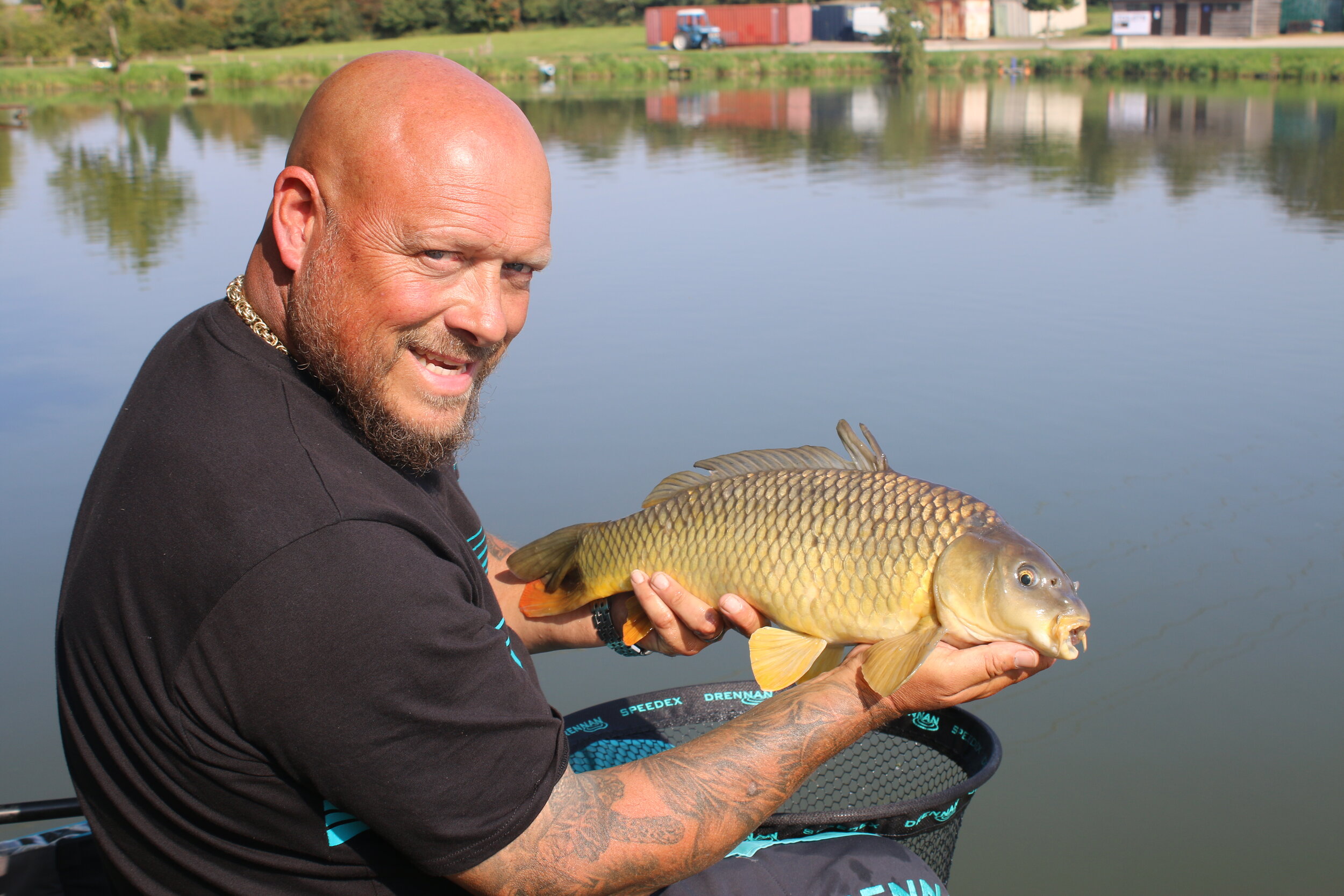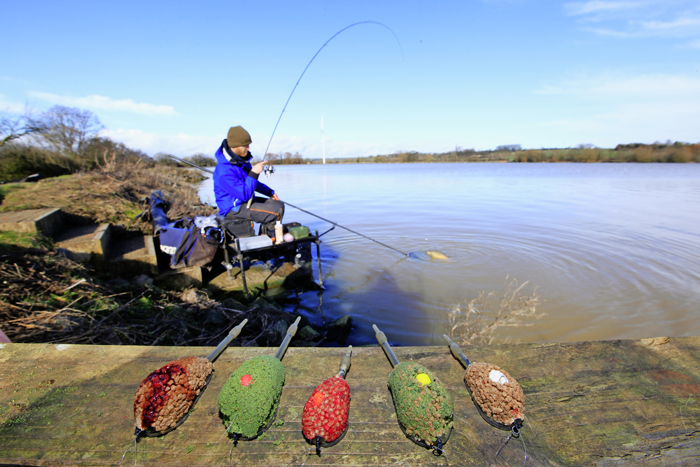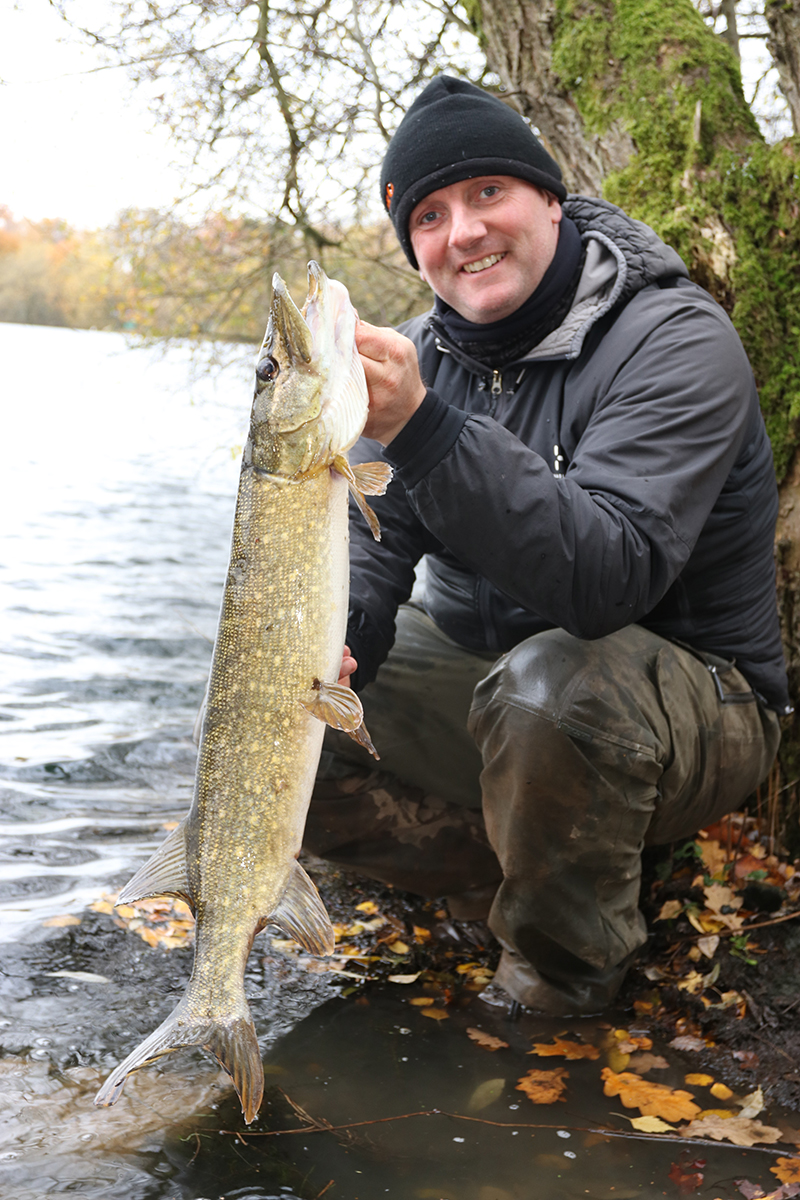Lure Fishing Tips | Beat the weed for perch - Sam Edmonds
Lure fishing at this time of year can have many challenges, mainly the abundance of aquatic vegetation that has to be negotiated without constantly snagging up.
I like to use shallow-diving, floating crankbaits, worked above the weed. Try pausing the retrieve now and then and the lure will float up, allowing you to start working it again.
A selection of crankbaits
A soft bait, rigged Texas-style, are also worth a go. To add weight, rig it on an offset jighead or with a small bullet weight. Spinnerbaits can also work well, because the hook rides upwards to avoid most snags.
A Texas rigged creature bait
Pike fishing tips | Make a wafter deadbait with Paul Garner
I find that slow-sinking or wafter deadbaits are very effective.
They will not only see you get more runs, but will increase the number of pike that you land, too.
There are loads of ways of producing a slow-sinking bait, but using Deadbait Sticks is my favourite.
1: Select a stick a third of the bait’s length. A short length of rigging wire in the end enables it to be fixed to the trace.
2: Carefully push the stick into the bait, – through the mouth (whole baits) or into the body cavity if it is a tail section.
3: Tie the rigging wire to the top treble hook on your trace so that the Deadbait Stick is secured.
4: Test the bait in the margins. If it is too buoyant, add a swan shot or two to the trace just above the hooks.
Pike fishing tips - Dai Gribble's top five deadbaits
Smelt
If I could use only one bait for pike it would be smelt. They are incredibly versatile and can be used with every method. They have an unusual smell that is a little like cucumber, but pike love them. Their pale colour makes for a very visible bait that’s ideal for drifting or popping up above weed. They are tough so can be cast long distances and used for wobbling and trolling.
Mackerel
Whether it be a small ‘Joey’ mackerel fished whole or half a larger mackerel, they make outstanding baits. I’m sure one of the main reasons for this is that they are very oily, which draws pike to them from a long way away, even in coloured water. Mackerel are quite dense and streamlined, making them the best choice if you need to cast a bait a long way.
Sardines
Like mackerel they are very oily and I reckon pike prefer them to any other sea bait. There is one major drawback – they are extremely soft. This is not an issue when they are frozen but once they thaw out they are prone to flying off the hooks. However, at short range, by hooking sardines with the top hook in the gill plates they can withstand a much firmer cast.
Roach
Pike are used to eating roach as part of their natural diet. On occasions pike will show a marked preference for roach over sea baits and for this reason I usually start a session with one rod baited with a roach. Often roach deadbaits have the swim bladder intact, making them perfect for popping up – just add shot to the trace to set how far up they will sit.
Lamprey
On some waters lampreys outfish every other bait, and on others they rarely produce a run. No other deadbait comes close to them in terms of the amount of blood they exude, and I like to slit the gills with a sharp knife to maximise the amount of blood leaking out. It is worth doing this every cast as it is amazing how much pike-attracting blood there is in a relatively small bait, even when it has been in the water for hours.
Pike fishing tips| Five great tips & Tricks for pike
Here are some of the best pike fishing tips that we could find to help everyone from the novice angler all the way to the experience piker.Take a look at these great pike tips to help you catch more next time you’re on the bank.
We have gathered some of the best pike fishing tips from Dave Horton who landed one of the best hauls of big pike in recent history consisting of five fish for over 150lb!
The Essex based anglers pike weighed in at 36lb 8oz, 32lb 8oz, 29lb 8oz, 29lb 4oz and 23lb 12oz.
it’s safe to say that Dave is no stranger to pike fishing, having spent the majority of his angling career chasing them throughout the British Isles and Ireland, claiming “It’s my thing!”
His record is nothing short of exceptional either, having landed 30 pike over the magical 30lb mark, topped by a personal best of 37lb 4oz. He’s had 100 pike over the remarkable 25lb-plus mark, and is only one fish shy of 300 20lb-plus fish to his name, although we’re sure it won’t be long until he breaks the barrier!
We asked Dave to put together a few monster pike tips, to help you catch one! As you will see, it’s paramount to be first…
1) Arrive First!
“Whether it means arriving first, or being the first to fish a venue. In the case of Chew, I had arrived early to secure the spot I wanted, I also purchased the predator ticket so I could be first on the venue after the eight week shut”
2) Fresh is best!
“Ensure your bait is in first class condition and as fresh as possible, don’t skimp on bait as it’s the final piece of the jigsaw, the difference between a successful picture and an unsuccessful one. I highly recommend online baits UK”
3) Get your bait out quickly!
“Big pike feed in short sharp spells, when you catch a fish get a bait back out straight away, a prime example of this is my recent session, where three of the pike fell within a 30-minute feeding spell”
4) Position your bait carefully!
“Positioning your bait in a manner that any moving fish will approach it first, will result in you having the greatest opportunity to catch it. On popular venues it pays to be at the end of a group of anglers, rather than in the middle”
5) Be prepared!
“I often think I make a lot of my catches long before I wet a line, I like to be completely prepared. Being in the right spot, at the right time, with the right kit, bait and mind set, only occur through preparation. This haul of pike didn’t happen by accident!”
Pike Fishing Near Me | Where can I catch pike
Wondering where is best to go pike fishing this weekend? Then you might want to take a look at our Fishing Near Me page. We’ve got loads of listicles for every species including pike! So if you’re stuck on where to fish then take a look as we can guarantee that you’ll find a river or lake near you, that is stacked with big pike! Click here to see more.
More pike fishing tips!
Not had your fix of pike fishing tips and want more? Then head over to our pike species page where we have everything from tips to tackle and venues. Everything you would want to prepare yourself for your next session is here so head over and take a look. Click here to see our species page.
Top 7 tips for pike fishing on rivers
Pike fishing on rivers can be a little tricky, to help you tackle these very tricky venues we've put together some of the best pike fishing tips for river pike so you can catch more when out on the bank whether you’re an experienced pike angler or decided to try it for the first time, we’ll have you covered with these great pike tips.
1) Understand the river
Rivers are wild, so you need to take the time to learn the stretch you are targeting to get the most out of your pike fishing. Ideally, walk the river prior to the season, when the river is low and clear so areas of deeper and shallow water are more easily identifiable.
This reconnaissance also allows you to check out areas of weed or even snags. Take in the geographical nature of the land too. The steeper the sides of the surrounding land, the quicker the river will flood in the rains. Plus, the lower-lying rivers also tend to stay in flood for longer. All of these things will affect how the river fishes.
2) Keep mobile
Once you have sussed a length of waterway, it is always best to keep mobile. It is often best to cover a couple of miles or more in a single session. This means keeping your kit to a minimum but the more water you are able to cover, the more chances you will have of finding a feeding fish.
3) Gear up!
On rivers, particularly strong, powerful waterways like the Wharfe, Swale, or Wye, the pike have built up a great deal of muscle mass as they are used to fighting the flow. So, to ensure you are able to land everyone you hook, step up your gear up accordingly. Use either 20lb mono or ideally braid. It's also best to use 28lb wire for my trace. River fish are not as pressured as stillwater fish, so they are not put off by tackle, so why risk losing them due to too your gear being too light.
4) Early and late
Low, clear rivers can be the kiss of death regards pike fishing, as their confidence and cover are blown. This means that especially on days when the sun is bright, either early or late starts are the name of the game. The amount of decent-size pike that have been caught over the years, fishing at either dawn or dusk is incredible.
5) Pre-bait
It sounds time-consuming, but never underestimate the power of pre-baiting. Rivers such as the Wharfe and Trent are big rivers and experience has shown that the pike on this type of watercourse are very migratory.
By getting the fish used to feeding in a certain area, you can start to either hold them there or intercept them as they are travelling in search of food. No river pike, especially one of the ‘big girls’, is going to turn their nose up at a free meal!
6) Twitch your rig
Always use float rigs on a river. Floats are better are giving you early indications that a fish has possibly picked up the bait.
To help induce a bite, one of the best tactics is to give the reel a couple of turns to twitch the rigs back to the bank. This can be like a trigger to a fish that is in two minds whether to take the bait, as it thinks its dinner is getting away.
7) On the rise
Often the best time to fish a river for pike is when the water is rising. The prey fish become very active and they need to continually adjust their position in the river due to the ever changing current speeds.
This leaves them wide open to attack from a predator as they are forced to search refuge from the flood.
Conversely, once the river is in flood, the pike fishing will be next to useless due to the extra colour in the water. You will now have to wait until the flow ebbs and the colour once again drops out before the pike will feed confidently. On the plus side, if it floods for a good while, the fish will be ravenous when the waters do eventually start to go down.
PIKE FISHING NEAR ME | WHERE CAN I CATCH PIKE?
Wondering where is best to go pike fishing this weekend? Then you might want to take a look at our Fishing Near Me page. We’ve got loads of listicles for every species including pike! So if you’re stuck on where to fish then take a look as we can guarantee that you’ll find a river or lake near you, that is stacked with big pike! Click here to see more.
MORE PIKE FISHING TIPS!
Not had your fix of pike fishing tips and want more? Then head over to our pike species page where we have everything from tips to tackle and venues. Everything you would want to prepare yourself for your next session is here so head over and take a look. Click here to see our species page.
Five great pike fishing tips for urban angling.
The time to start pike fishing is now so we’ve gone to urban canal specialist Tom Synnott and Sean Edwards for their best pike fishing tips to help you go out and catch a pike this winter. Whether you need tips on bait or strategy we will have you covered. b
FIVE TOP TIPS FOR PIKE FISHING
1) Travel light
The great thing about pike fishing is that all you need is a rod, reel, mat, lure box and a net. We connect ours to our bags using magnets so it quickly pulls off and we’re ready to net as soon as needed.
2) Cary your lures
Pike can be very picky with what they want to take so make sure you take a small selection of all s of lures including spinnerbaits, swimbaits, cranks, jigheads and jerksters. Pike certainly prefer different things on different days so go armed.
3) Target Bridges
Pike love to shelter underneath overhanging trees which make bridges a fantastic alternative in urban locations you can find loads of tree replacements and, in our opinion, eight out of 10 times they have resident pike under them.
4) Fish the “hang”
When is comes to working a swimbait in the water, give it a twitch and let it sink for two seconds. Nine times out of 10, pike will hit the lure as it’s falling through the water column. This is called the ‘hang’.
5) Walk the dog
After 10 casts in each swim, throw your lure out and walk to the next feature as if you are ‘walking the dog’.
We’ve caught so many pike trolling the lure by walking along the canal, and the longer your lure is in the water, the more likely you are to hook a fish!
How to make a pike fishing groundbait
You can use a wide range of different ingredients in your pike groundbaits, as I am just as interested in attracting silver fish as I am predators.
Chopped and mashed fish are a good starting point, because they match the baits you will be using for pike, but fish oils, pellets, maggots and worms can also be added to draw in the prey fish.
1) To a pint of water add two tablespoonfuls of Winterised Salmon Oil from a tackle shop and mix the additive in well.
2) Slowly add a bag of Method mix groundbait until a stiff consistency is reached. Leave the groundbait to stand for about five minutes to allow the water to be fully absorbed.
3) Next, add a tin of mashed sardines in water (not oil) to the groundbait.
4) Pellets, maggots or worms can also be added to the mix to help attract bait fish.
5) Cut up a few oily deadbaits, such as Blueys or sardines, and add these to the groundbait.
6) Mould the finished mixture into balls and catapult four of these around each pike float.
Perch fishing lures and how to attach them.
Short on time and want to get out on the bank? Then look no further as we have the answer for you. Setting up a lure for perch fishing is one of the simplest and easiest ways to get you fishing in a short space of time. We got bait expert Dr. Paul Garner to show us the best way to rig up a perch fishing lure for when you are next on the bank!
To see more great perch fishing tips then check out our species page here
1) Always use a wire trace. Although I do not go looking for pike, the chances are that one will come along at some point, and a trace ensures that I can land it safely.
2) Crankbaits need only be clipped on and you are ready to go. Don’t economise on the safety clip, butchoose a branded item that won’t let you down.
3) Use a weighted jig head with shads and creatures. Hold the hook next to the lure and make a slight mark on the back in the position where the hook will exit.
4) Push the point of the hook into the front of the bait and carefully work it into the soft plastic. Take your time and make sure that it goes in straight.
5) Approximately 50 per cent of the gape of the hook should be left exposed beyond the back of the lure when it is rigged correctly with the hook through the mark you have already made in step
6) If snagging or weed is a problem consider a weedless jig hook. This has a large offset gape that the fish will push through the bait, revealing the hook, when it bites down on the lure.
Your guide to fishing a weir pool
If you're looking to catch an abundance of different species on a river this season then you really need to give a weir pool a try.
Weirs are a haven for a number of species thanks to the warm, oxygenated water that’s constantly being flushed through the swim. Food items naturally collect in the basins of weirs too, and there’s plenty of underwater features to create the perfect home for predatory species such as pike, perch and zander.
However, weir pools can be quite daunting for those who have never fished one before, so Angling Times is here to help. Here’s our exclusive overview of these fantastic river structures which will explain where you can expect to find each species and what tactics you can use to catch them, whatever you fish for.
Dace
dace are widespread in weir pools. They, too, thrive in shallow water much like the minnows, and can be found in numbers at the tail end of the weir. A trotted stick float or waggler with bronze maggots will find plenty of bites from these stunning fish – with the odd roach, perch and minnow too.
Roach
Roach can be caught from most areas. In the summer they can shoal up in shallow water over the gravel at the end of the weir, but will also drift into the deep hole created by the main flow. A maggot feeder is hard to beat for a weir pool roach, but watch out for those pike, which love to snap up a hooked roach as you wind it in.
Minnow
Those of you who have fished with maggots or pinkies on a river will have caught plenty of minnows in your time. These tiny fish thrive in shallow water with lots of gravel, and can be found relatively close to the bank at the tail end of a weir. Although regarded as an afterthought to many anglers, those looking to catch a big perch from a weir pool won’t find a better bait than a live minnow.
Chub
chub love gravel swims and can be found in all areas of the weir pool. You’ll find you will catch a lot of chub while fishing for the barbel, but if you want to target them deliberately few things can surpass a large piece of breadflake or a whole lobworm. They will also take small lip-hooked livebaits. Chub won’t venture far from the main flow, so aim your attack here to catch a few.
Bream
A weir pool is a great place for bream to pick up food items that have been washed downstream. They are often found in the deep holes at the bottom of the weir pool. Cast a heavy cage feeder stuffed with groundbait or liquidised bread around 5ft from the weir sill and fish flake, double corn or lobworm on the hook.
Barbel
Barbel fishing on a weir pool has to be up there with the best fishing around. These fish love fast, oxygenated water over gravel. When you’ve leaded around and found solid gravel use a bait dropper to introduce boilies, pellets and particles. Over this fish a bomb with a big pellet or chunk of meat to catch. The undercut directly under the sill of the weir also offers a good refuge for these fish.
Perch
Perch thrive in the snaggy features, as do the juvenile fish they eat! You can find perch under the weir sill, in shallow water and just where the gravel shelf drops off into deeper water. A chubber float with a lobworm is a superb tactic, but maggots will also catch. Big perch can be tempted on spinners, small jigs or lip-hooked livebaits.
Pike
Wherever there’s an abundance of silverfish such as roach or dace the pike won’t be far away. They’ll often skulk at the bottom of the weir pool or on the gravel shelf, from where they can easily ambush their prey. If there are limited snags at the bottom of the weir a legered roach or lamprey section is hard to beat for a pike. Alternatively a spinner or roach-imitation lure will get a reaction.
How to catch pike on a day-ticket water!
The country’s carp waters are a largely untapped resource for pike anglers and top specimen hunter Paul Garner cashes in on the apex predators
Over the last few decades thousands of gravel pits have been developed as carp fisheries, leaving the other species there virtually neglected. Many of these lakes contain hidden gems that rarely, if ever, succumb to a boilie and bolt-rig approach, none more so than pike, which often live almost unnoticed in many carp fisheries.
As we all know, pike thrive on neglect. It is, therefore, no wonder that there is now some great sport to be had for the enterprising angler who targets these venues. Many carp fisheries operate on a day-ticket basis, enabling anglers looking for other sport to fish alongside the carp anglers for a few pounds. when the banks are much quieter, there is plenty of room to explore the untapped potential of these waters.
One such venue is Sandhurst Lake, set amid the historic Yateley complex in Hampshire. This shallow gravel pit is well known for its stock of more than 400 carp to 40lb-plus, but the other fish residing here are less well known. After hearing a whisper of some great pike sport to be had, Paul Garner decided to investigate its predator potential.
Travel light
As the sky slowly begins to lighten, Paul surveys the surface of the flat-calm gravel pit looking for the tell-tale dimpling of small bait fish.
He believes this is essential for a successful day’s piking. “The water is just about at its coldest right now, but that doesn’t mean the fish are inactive. On most lakes you will find them shoaled up tight in just one or two areas. Through the day you would never know they were there, but at first and last light they will become active and can be spotted dimpling and rolling. Where the bait fish are concentrated the pike are unlikely to be far away, so it is really important to try to find the bait fish before you start.
“You will also tend to find that the wind will drop at the start and the end of the day. This makes spotting bait fish so much easier than when there is a chop on the water.”
Unfortunately, it is one of those mornings when the bait fish haven’t read the script and, as the sun rises above the horizon, Paul has still seen no signs of their presence, apart from the occasional fish in the middle of the lake. With little to go on, he decides to start fishing as the pike are likely to have a feeding spell in the early morning.
“If I don’t see any signs of bait fish, then my first port of call will be any areas with lots of features, such as overhanging trees, reedy margins, inflows, or snaggy areas. All these are possible holding features and are worth fishing. Normally, if there is a pike present I will get a take pretty quickly, so I will only stay in a swim for an hour before moving. This might sound like a lot of effort, but often the pike will be mainly in one area and I need to find them, rather than wait for them to come to me.
“Travelling light is essential for this style of fishing. All I have today is a small Nash rucksack carrying my tackle, two made-up rods, a small coolbox containing my deadbaits, a large unhooking mat that doubles as a seat, and a big landing net. I can pack up and move swims in minutes, covering lots of water even on a short winter’s day.”
Float fishing
With no trace attached, Paul sets the stop-knot above his float at about six feet and underarm casts to a distance of four rodlengths. He draws the rig slowly back towards the margins, feeling for weed as he goes. After two more casts, he is ready to start fishing.
“The lake is very weedy and actually quite shallow for a gravel pit. There is less weed in the margins, which is the ideal place for a pike to patrol anyway, so I am really pleased that I can fish this close in. Spending five minutes dragging the rig around is time well to check depth and assess weed growth.”
Hooking on a large smelt, Paul clips on his trace and lowers the rig into the margins, just a rodlength out. The process is repeated with the second rod, only this time a herring is cast a little further out to the edge of the weed.
After an hour without a bite, Paul unclips the traces and puts them in his coolbox before loading up his gear and moving to the far end of the lake. Here there’s a line of overhanging trees forming a canopy over the margins of the lake. Finding the water here to be slightly deeper, Paul pushes up the stop-knots on his rigs so that the floats are set at dead depth.
“Using floats not only tells you the depth of the swim, but they are also more sensitive than legering deadbaits and waiting for the alarm to go off. I use sensitive and slim pencil floats with highly visible tops, which I can see at long range. A take is normally signalled by the float lying flat before moving off as a pike picks up the bait and swims away.”
Paul explains the thinking behind his simple float rig. “Of course, you always have to use a wire trace when pike fishing. I never drop below 30lb test wire, as a slight kink may weaken the wire significantly during the fight. Just as important, though, is to use an uptrace above the weight, as this eliminates any chance of a pike catching the line and biting through it. I like to use a 30g weight semi-fixed to the swivel joining the two traces to give enough weight to stop the bait being dragged around, even on a windy day. The hook trace is then attached using a cross-lock swivel, so I can remove it instantly if I want to move swims, or to make unhooking a pike easier.”
Chance conversation
Another hour passes and, despite his best efforts, Paul remains fishless. However, a chance conversation with a passing carp angler has Paul quickly packing away his gear and preparing to move. Apparently, the carp angler has spotted several pike cruising along the margins in front of a swim in the middle of the lake and the area is full of small roach, too.
“That’s enough information for me.” declares Paul, as he gets on the move. “If you get wind of pike then move straight away. While we might not think of pike as shoal fish, they often congregate in certain areas of a lake, so I really can’t over emphasise how important it is to keep moving until you find them.”
Ensconced in his new swim, Paul carefully swings both baited rigs into the margins. The weed is much thicker out in the lake, which probably explains why the pike are patrolling the clear channel in the margins.
After only 10 minutes the left float twitches, sending tiny rings in all directions. Paul picks up the rod and, as the float falls flat and then starts to move off, he winds down and lifts into the first pike of the day. After a spirited fight, a beautifully-marked eight-pounder is resting in the landing net.
Within minutes, the other float is sliding across the lake surface and another nice fish is soon on the bank after spending a good proportion of the fight airborne! A third fish follows soon after, before the swim goes quiet. Despite changing baits and twitching them to try to induce a take, no more fish follow and it is obvious that the short feeding spell has either finished or the pike have moved off.
Paul soldiers on, but it eventually becomes clear that three fish will be the final tally. “Unfortunately no bigger pike have shown today. I have heard of fish to over 20lb being caught here this winter, and the carp angler in the next swim has spotted some bigger fish today. Still, to catch three cracking pike on my first visit is still a good result.
“Had I stayed put in my first swim I would certainly have been more comfortable, but would have blanked. Staying mobile was definitely the right plan, as I had no idea where the pike would show up today. It might be harder work, but I have learned a lot about the features in the lake – useful information for future sessions.”
Seven essential river pike tips
Leading predator angler Dean Brook reveals how he targets the biggest fish on the river...
UNDERSTAND THE VENUE
Rivers are wild, constantly changing entities, so you need to take the time to learn the stretch you are targeting to get the most out of your pike fishing. Ideally, walk the river prior to the season, when the river is low and clear so areas of deeper and shallow water are more easily identifiable.
This reconnaissance also enables you to check out areas of weed or even snags.
Take in the geographical nature of the land. The steeper the sides of the surrounding land, the quicker the river will flood during rain. Plus, the lower-lying rivers also tend to stay in flood for longer. All of these things will affect how the river fishes.
KEEP MOBILE
Once you have sussed a length of waterway, it is always best to keep mobile.
I often cover a couple of miles or more in a single session. This means keeping your kit to a minimum but the more water you are able to cover, the more chances you will have of offering bait to a feeding fish.
GEAR UP!
On rivers, particularly strong, powerful waterways such as the Wharfe, Swale, or Wye, the pike have built up a great deal of muscle mass as they are used to fighting the flow.
So, to ensure you are able to land every one you hook, step up your gear up accordingly. I use either 20lb mono or, ideally, braid. I also use 28lb wire for my trace. River fish are not as pressured as stillwater fish. They are not put off by tackle, so why risk losing them because your gear is too light.
EARLY AND LATE
Low, clear rivers can be the kiss of death when targeting pike because their confidence and cover are blown. This means that especially on days when the sun is bright, either early or late starts are the name of the game. I have lost count of the number of decent-size pike I have caught over the years, fishing at either dawn or dusk.
PREBAIT
It sounds time-consuming, but never underestimate the power of prebaiting. The Wharfe where I fish is a big river, and experience has shown that the pike on this type of watercourse are extremely migratory.
By getting the fish used to feeding in a certain area, you can start to either hold them there or intercept them as they are travelling in search of food. No river pike, especially one of the ‘big girls’, is going to turn their nose up at a free meal!
TWITCH
I always use float rigs on the river. Floats are better at giving you early indications that a fish has possibly picked up the bait.
To induce a bite, I often give the reel a couple of turns to twitch the rigs back to the bank. This can act like a trigger to a fish that is in two minds whether to take the bait, as it thinks its dinner is getting away.
ON THE RISE
Often the best time to fish a river for pike is when the water is rising. The prey fish become very active and they need to continually adjust their position in the river due to the ever-changing current speeds.
This leaves them wide open to attack from a predator as they are forced to search refuge from the flood.
Conversely, once the river is in flood, the pike fishing will be next to useless due to the extra colour in the water. You will now have to wait until the flow ebbs and the colour once again drops out before the pike will feed confidently.
On the plus side, if it floods for a while, the fish will be ravenous when the waters do eventually start to go down.



